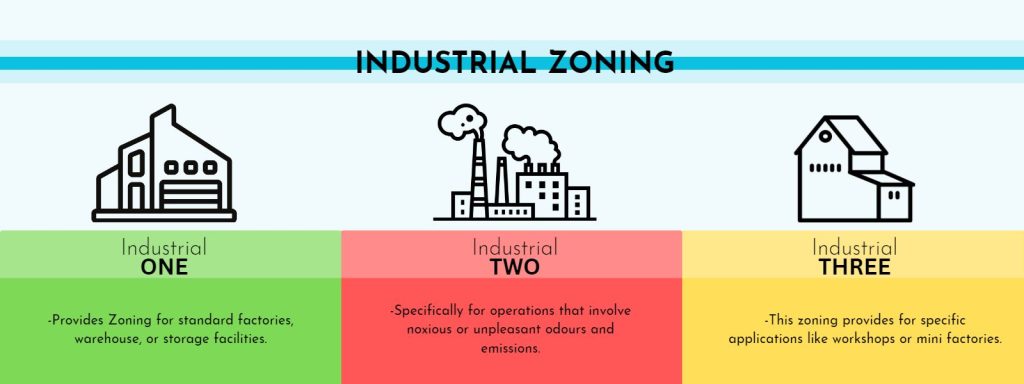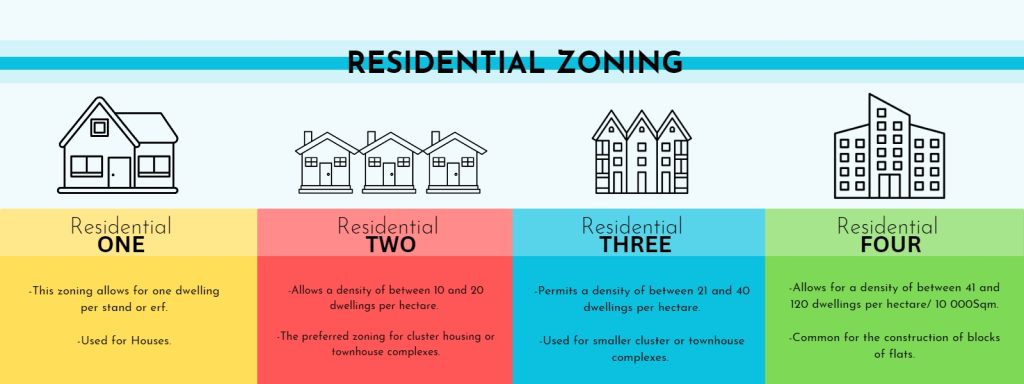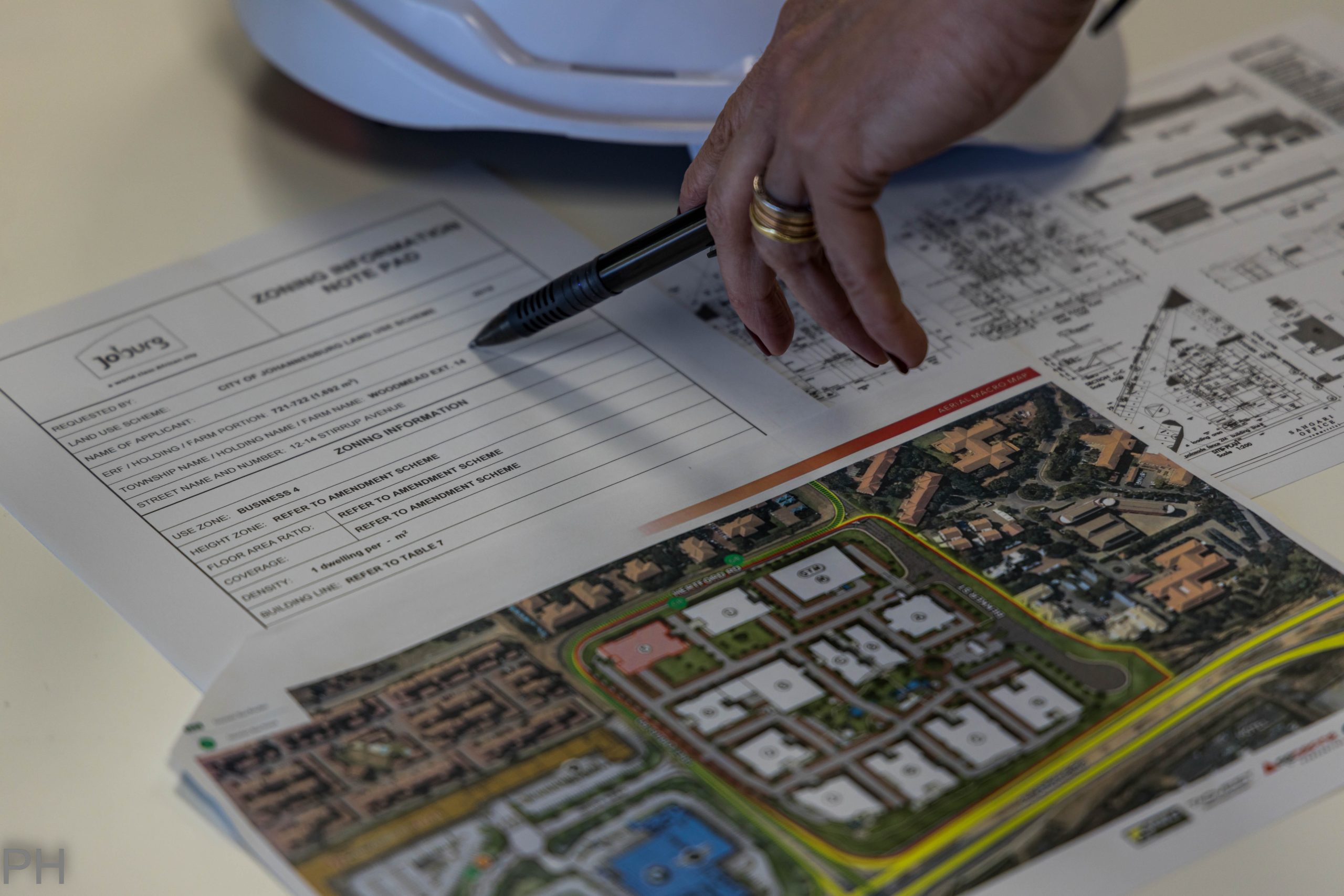Most property owners are familiar with the basic concept of zoning. Zoning determines the purpose which a property can be used. However, many are not aware of the various sub-categories of zoning which offers savvy buyers good returns in a changing market.
When buying a property, it is ideal to have the approved zoning in place. Otherwise, re-zoning a property is often a lengthy process. Properties in popular nodes with the approved zoning are sought after and hold their value.
Property zoning is an important aspect of land use in a given area. Local municipalities typically approve zoning regulations. These regulations promote public health, safety, and welfare, by ensuring that different types of land use are compatible with one another.
A primary purposes of property zoning is to ensure that different types of land uses are separate from one another. For example, residential areas are zoned to exclude commercial and industrial uses, which are zoned away from these residential areas.
Three factors that determine building restrictions.
One must familiarise themselves with the three factors that determine the restrictions of buildings to be constructed, namely coverage, F.A.R (floor area ratio) and density.
Coverage is the maximum area of land on which one is permitted to build F.A.R is the maximum floor area under roof allowed, and density is the number of dwellings permitted per 10 000Sqm.
Bulk is the maximum floor area allowed under roof.

In South Africa, property zoning is regulated by the Spatial Planning and Land Use Management Act (SPLUMA) of 2013. This act sets out the different types of land use zones that exist in the country. The local municipality approves these zones, and they are typically as follows:
Business/Commercial Zoning
Areas specifically for commercial activities, such as shops, offices, and other businesses. Generally, there are different levels of intensity within commercial zones. This ranges from low-intensity areas with small shops to high-intensity areas with large shopping centres and office complexes.

An example here: A 4 000-square metre property with the usual 40% coverage and 0.4 floor area ratio could place a maximum of 1 600 square metres under roof. Assuming he has been allowed a maximum of two storeys, a developer of this site would typically build three double-story office blocks of 530 square metres each (1 600 square metres divided by 3). Each block could be further split into four office suites of 132 square metres each.
Industrial Zoning
These areas are for industrial activities, such as factories, warehouses, and manufacturing plants. Additionally, different levels of intensity are allowed within industrial zones. From light industrial activities such as small workshops, to heavy industrial activities such as large manufacturing.

Unlike business or residential zoning, for industrial zoning, a 70% coverage is typically allowed. This means a 3100Sqm metre piece of land could have a building floor area of 2170Sqm. If the warehouse has a height restriction of 20 metres maximum, the developer will typically build a single-storey factory/warehouse.
Residential Zoning
These are areas designated for residential purposes, such as a single-family home, apartment buildings, and townhouses. There are typically different levels of density allowed within residential zones, ranging from low-density areas with large lots to high-density areas with smaller lots and taller buildings.
It is important to note that the specific zoning regulations may vary depending on the local municipality and the specific location of the property.

Example for Residential 1: A house with a permitted coverage of 40% on a total erf size of 1000-square metres. Allowing them to build, covering a maximum of 400 square metres, including garages and outhouses. If they have the right to build a two or three-storeyed home, one can cover up to 400 square metres per storey. The footprint will not be more than 400 square metres.
Example for Residential 3: On a 26 000-square metre property, 40% coverage amounts to 10 400 square metres. With a density of 25 units per hectare, the developer on this site could then build 65 townhouses (2.6 hectares’ x 25) of 160 square metres each. That is the total coverage of 10 400 squares metres divided by the 65 units, over two floors – 100 square metres at ground level (including a double garage) and 60 square metres upstairs.
How does one apply for re-zoning?
One has two options to follow if applying for re-zoning in commercial property.
First option:
Engaging in the services of a private town planner is always helpful. Firstly, they are familiar with all aspects of the town council. For a fee they handle this both efficiently and effectively and save you a lot of time and money in the long run.
Second option:
Handling the procedure on your own, which one should try to avoid, as it is a lengthy process.
A town planner is the better option, as they will provide a step-by-step process on the ordeal. Additionally, they will know all the documentation requirements as well as what the process entails.
Property zoning plays an important role in promoting environmental sustainability. Zoning regulations can help protect environmental sensitive areas, such as wetlands or wildlife habitats. This is done by prohibiting or limiting the development in these areas.
By regulating the type, intensity, and location of development, zoning can help to promote a more sustainable and liveable built environment.
Reach out to Paula for information on this subject.
PAULA HARDY
Director, PH Real Estate
C: 082 885 4502
E: paula@phrealestate.co.za


